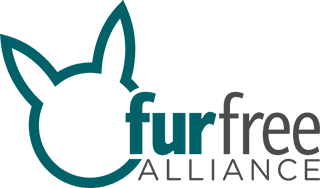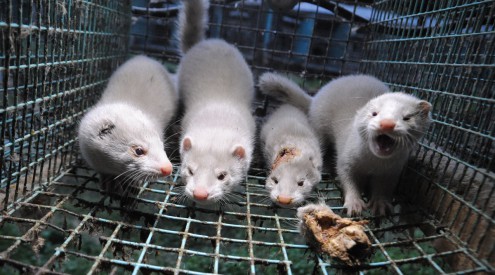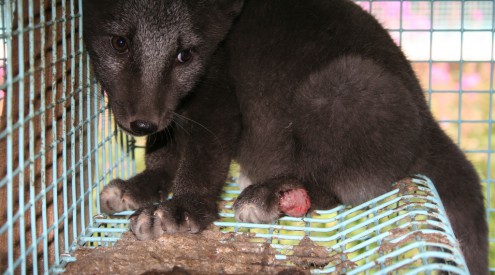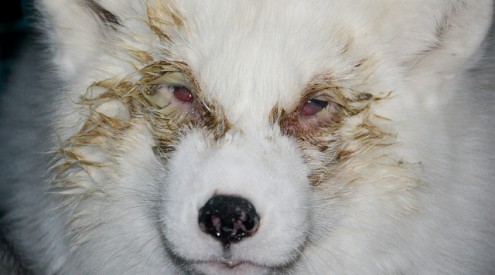WelFur, a project initiated and funded by the fur industry, claims to ensure a high level of animal welfare on fur farms. However, numerous scientific reports demonstrate that WelFur is not able to address the serious animal welfare problems inherent in fur production.

WelFur
Certified Cruel
The scientific review ‘Certified Cruel’, launched in the European Parliament by the Fur Free Alliance in 2020, reveals how the industry’s WelFur scheme fails to meet the most basic animal welfare needs of animals kept on fur farms. Renowned veterinarians condemn the scheme for failing to address the outdated cage system on fur farms and the resulting animal welfare issues.
In a detailed analysis of the WelFur assessment protocols, veterinarian and Professor Emeritus, Bo Algers reveals that:
“The WelFur schemes combining of different welfare measures into overall scores obscure individual measures and therefore allow serious cases of individuals suffering from poor welfare to be masked.”
The report also raises serious concerns about conflicts of interest in auditing practices and concludes that fur farming contravenes European legislation covering animals kept for farming purposes and fails to meet the standards set by the Council of Europe.
A scientific review of WelFur
The comprehensive scientific review of animal welfare standards and WelFur “The Case Against Fur Factory Farming”, published by Fur Free Alliance member Respect for Animals (UK) in 2015, looks in detail at the conditions in which mink and foxes are kept in fur farms and finds the scheme inadequate and unable to address the major welfare issues caused by fur cage farming.
Conflict of interest
Despite industry statements that assessments are undertaken by an independent third party, the Finnish Fur Breeders ́ Association owns 38% of the stock of the company Luova which states it is in charge of auditing Finnish fur farms, and several of its assessors also have ties to the fur industry.
Being industry-funded and led by countries with major industry-interest, WelFur seems more like a project aimed at validating fur farming as a means of livelihood than at developing better welfare for animals. In the 2010 annual report of the Finnish Fur Breeders’ Association, both WelFur certification and the advisory services on animal welfare offered to fur farmers are presented as reputation management and methods of tackling the political pressure on fur farming. When concern for the welfare of animals is not an end in itself but a means to an economic and political end it should be treated with scepticism.
Current European fur farming practices are incompatible with basic animal welfare standards and EU law. WelFur, which is designed around the intensive cage-based system and the current minimum level of legislation, does not offer satisfactory solutions to the serious animal welfare problems associated with fur farming. Decision-makers must therefore refrain from endorsing WelFur, or in any way integrating it into animal welfare policies.





